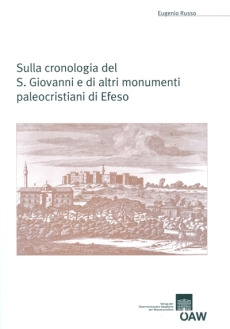Eugenio Russo
Sulla cronologia del S. Giovanni e di altri monumenti paleocristiani di Efeso
Reihe: Archäologische Forschungen, Denkschriften der philosophisch-historischen KlasseI monumenti paleocristiani di Efeso presentano numerosi problemi finora irrisolti, anche per quel che concerne la cronologia. Il libro cerca di stabilire dei punti fermi in una realtà tanto complessa e difficile – che possano fungere da pilastri portanti per una futura griglia entro cui collocare monumenti e manifestazioni artistiche della città. È stata applicata innazi tutto un’analisi sistematica delle strutture murarie, tenendo ben presenti le caratteristiche peculiari delle vicende edilizie efesine. E combinando le varie metodologie disponibili a seconda del grado di “resistenza” dei monumenti di fronte alle domande poste dall’indagatore, della quantità e del tipo di elementi a disposizione, delle peculiarità dei singoli manufatti. Al di là dei risultati conseguiti, il libro costituisce anche una riflessione sulla multiformità dei metodi disponibili nell’esame dei monumenti a prescindere dagli strumenti scientifici, giacché i risultati offerti dalle moderne tecnologie vanno sottoposti – come dovrebbe essere evidente, e non sempre lo è – alla verifica delle vicende storiche e del confronto con tutti gli altri dati ricavabili dai manufatti. Si sono analizzati S. Giovanni, S. Maria, il c.d. Palazzo bizantino, la fontana bizantina di fronte allo stadio, la fontana nella casa vicina alla via dei Marmi, il c.d. “Apsidenbau”, l’edificio con abside all’angolo tra via dei Cureti e via dei Marmi.
…
The early-christian monuments of Ephesus present a lot of problems so far unsolved, also about the chronology. The book trys to fix some basic principals – in a so complex and difficult reality – that can act as load bearing pillars for a future chronological construction in which to put monuments and artistic manifestations of the town.First of all a systematic analysis of the structured works has been made, bearing the peculiar features of the building vicissitudes of Ephesus in mind. And combining the various available methodologies according to the degree of “resistance” of the monuments in front of the questions asked by the researcher, by the quantity and the kind of available elements, by the peculiarity of the single handworks.Beyond the achieved results, the book is also a reflection about the multiformity of the available methods for the examination of the monuments apart from the scientific instruments since as the results offered by the modern technologies can be submitted – as should be obvious, but not always it is – to the check of the historical events and of the comparison with all the other data drawing by the handworks. Have beeen analized St. John, St. Mary, the so-called Byzantine Palace, the fountain in front of the stadium, the fountain in the house near the Marbles street, the so-called “Apsidenbau”, the building with apse in the corner between the “Kuretenstrasse” and the Marble street.

